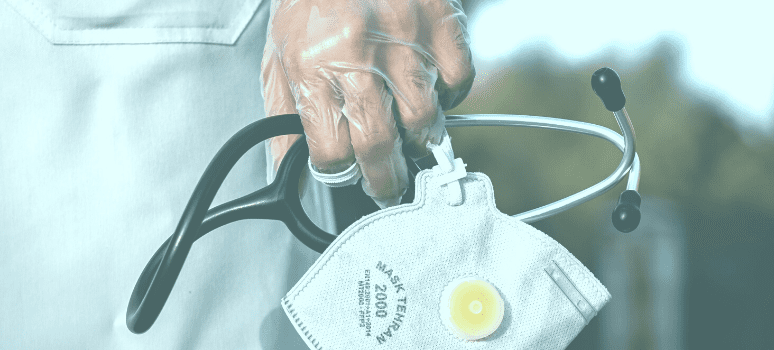
Effective treatment of coronavirus is a major challenge that is also being addressed by integrative and complementary approaches to the use of techniques such as ozone or acupuncture.
Covid-19 has surprised the world by its ability to spread and the deaths it is causing. But we are also rapidly learning about its phases and effects on the body in a race to respond beyond life support. We are also applying therapies on symptomatology that can help patients to improve their response to the virus.
In December 2019, the first case of this type was reported. coronavirus in Wuham City, China, as a type of atypical pneumonia. On 11 February 2020, the World Health Organisation gave it the name by which it is now known. Covid-19 (corona - virus -disease-2019).
The social distancing and thorough hygiene measures that have been taken are intended to curb the contagion that occurs through the inhalation of droplets from the breath of people carrying the virus. This direct contact or hand-to-hand contact if we touch surfaces where the virus is present is the main prevention measure being applied to everyone. However, it has been seen that there are risk factors such as age, previous illnesses, gender or viral load with which one is in contact. There is also talk of increased genetic susceptibility, smoking or even environmental factors, although the direct link has not yet been established.
Such a rapid spread is also due to the fact that the incubation period of the virus is very long, between 1 and 14 days with no symptoms. but the virus can be transmitted.
The evolutionary stages of covid-19
Initially, during the incubation phase of the virus which, as mentioned above, can last up to two weeks, develops asymptomatically.
The The second phase would begin when a mild or moderate symptomatology of dry cough, fever, pain and asthenia appears.. Treatment in these cases is symptomatic and requires isolation of patients at home. In this phase, the immune system responds to eliminate the virus from the body and prevent its progression. Between 60 and 80 percent of infected people pass through this phase and the disease does not progress any further.
A third phase is critical. The evolution of the disease manifests itself mainly at the respiratory level - viral pneumonia - and with multisystemic involvement. requiring care for respiratory failure and sepsis. The response of the immune system is excessive (storm of cytokines) causing inflammation in different organs and tissues. Pneumonia is the most serious consequence of this inflammation as it can develop suddenly and very severely within a few hours. This is one of the most surprising features of the disease that is being studied, the sudden aggravation of the disease that could be related to genetic aspects of the patient.
Research resources to find an effective antiviral treatment are multiplying. Until there is an effective vaccine or treatment, the world's population will not be safe from covid-19.. Clinical trials are focusing mainly on the use of existing drugs - antivirals and systemic corticosteroids - which may act in one way or another depending on the stage of the inflammatory process. Work is also being done on the study of plasma from cured patients and clinical trials such as the Solidarity Trial, an international study involving 4,000 Spanish healthcare professionals.
Treating inflammation from the outset is important in reducing mortality. As described by Beltrán Carrillo (medical director of the Beltrán Carrillo clinic) and Esther Martínez (paediatrician and Head of the Integrative Paediatric Oncology Unit at Sant Joan de Déu Hospital), "All safe therapies must be used to reduce this inflammatory response and prevent mortality.
Therapies that can help reduce the body's response to the virus
In their article "Covid-19 and acupuncture: is there a new line of therapeutic research?", Drs Carrillo and Marínez describe "the anti-inflammatory and immunomodulatory effect of acupuncture, as well as its preclinical and clinical effectiveness in different conditions with immunological alterations similar to COVID-19".
In this paper, they explain that acupuncture has a proven biological plausibility with an acceptable level of clinical effectiveness and safety that makes it "an effective and safe option to consider in this health emergency situation". They also propose an adjuvant protocol for each stage of the disease.
Both authors consider that acupuncture can have a preventive character, reinforcing the immune system, as well as facilitating the recovery of patients. This type of therapy would be applied during the progression of the disease for its anti-inflammatory and immunostimulatory effects.
The World Health Organisation considers that ozone is the most powerful disinfectant. As a gas, it is not included among the virucidal liquid disinfectants recognised by the Ministry of Health, but it is an effective means of disinfection. In fact, it is being used for the disinfection of vehicles used for essential services these days. If ozone is not included as a disinfectant, it is because it cannot be packaged and marketed, it must be produced in situ with ozone-producing devices.
But the application of ozone for its disinfectant properties is not new and does not only concern hygiene. Its therapeutic applications are numerous and, although there is no scientific evidence to show that ozone can be effective against covid-19, there is no scientific evidence to show that ozone can be effective against covid-19.However, a proposal has been launched by the Spanish Ozone Therapy Society to assess the efficacy and tolerability of this therapy in treating patients.
The organisation points out that clinical trials have been started by different teams in China and Italy. While awaiting preliminary official results, they explain how the ethics committee of the University Hospital Santa Maria della Misericordia in Udine authorised ozone therapy treatment for 36 patients admitted on a compassionate basis. On five days from the start of treatment, 35 patients were observed and only one remained intubated..

